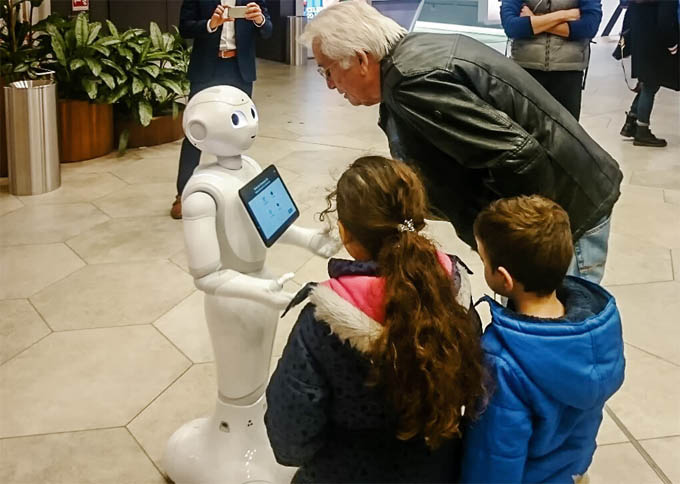When service robots serve customers: 5 tips
The e-business consulting firm elaboratum conducted a survey to determine how service robots are accepted by customers and provides recommendations for the use of robots in retail stores.

Robots in retail are no longer news, at least as far as the automation of warehouses and logistics centers is concerned. Automation is already in full swing there. E-commerce retailers, who are investing heavily in robotics, are also exerting enormous pressure on the industry in this area. This is evident not least from the market trend: by 2025, the global robotics market is expected to reach US$87 billion, according to the Boston Consulting Group. More than half of this will be for the retail sector. This is because robotics can, in principle, be integrated into every stage of the retail value chain. This way of using robotics for more than just distribution processes is increasingly coming into focus.
Service robots in use
Thus, at the point of sale, humanoid service robots can completely change the customer experience and customer interaction. For retailers, the innovative applications and effects of robotics offer many new communication and business opportunities. But what about customer acceptance of service robots and what is important to consider? We investigated this question in a survey of 156 participants of different ages.
Service robots, such as the AI-driven humanoid service robot Pepper, can interact with customers in brick-and-mortar retail by greeting customers, advising them on a product level, answering questions, capturing customer feedback, providing entertainment, or assisting with online orders. Whether this succeeds and is positively received by customers depends on several factors. Based on our previously published Study "Robotics in Retail and the results of the current survey, we have come up with five tips for retailers thinking about using service robots in stores.
5 tips on how service robots can be used in the retail sector
- Tip 1: Benefit: For acceptance by customers, a service robot must first run without errors and perform meaningful tasks independently.
- Tip 2: An important key component is the distribution of roles between sales staff and service robots. A service robot will only be accepted if cooperation is harmonious and clearly structured.
- Tip 3: Customer participation is key to identifying meaningful tasks for the service robot.
- Tip 4: Women in particular value the empathy of a service robot. Authentic and sympathetic behavior is significantly more important for women than for men. The empathy of a service robot will also become increasingly important in the future, because this factor is also significantly more important for digital natives than for other age groups.
- Tip 5: The appearance and empathy of a service robot are significantly related. Both aspects must be considered together in order to inspire customers.
Humanoid service robots offer retailers considerable advantages. To ensure that customers also see an advantage for themselves in these new types of "salespeople" and accept them, their use must follow a clear benefit strategy. If a win-win situation can be created, both sides benefit.
More information on the topic: www.elaboratum.ch/studie-robotics-in-retail









